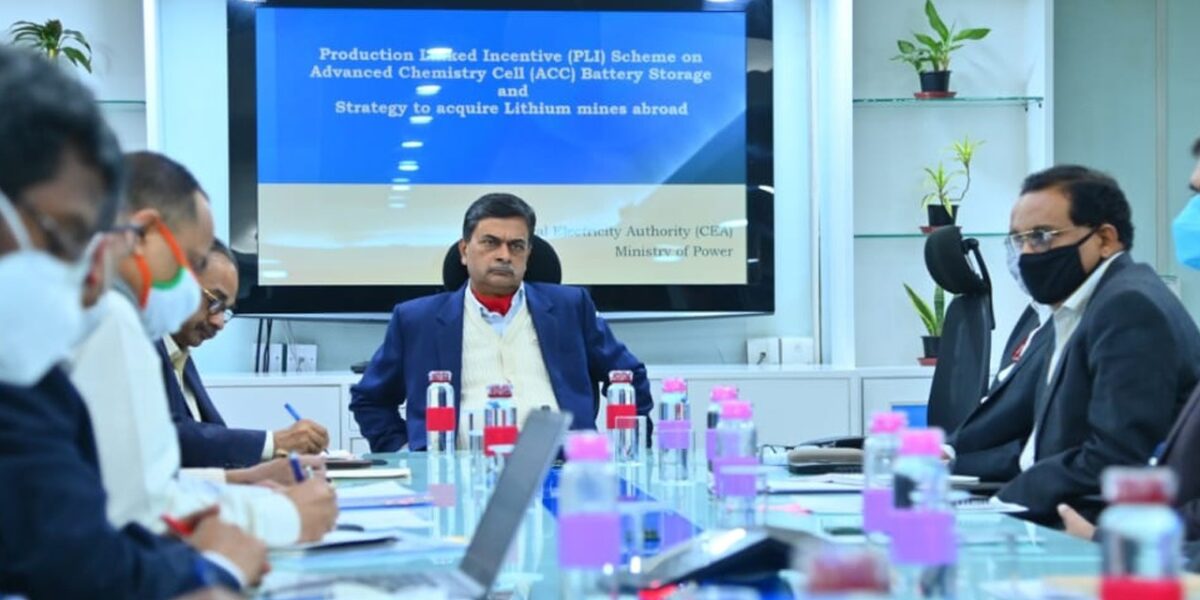The Union ministry for power and new & renewable energy, R.K. Singh, chaired an inter-ministerial meeting on December 8, 2021, to discuss issues relating to battery storage.
The meeting sought to discuss the production linked incentive (PLI) scheme on advanced chemistry cell battery storage, as well as strategies to acquire lithium mines abroad.
Lithium-ion technology is today the most popular technology used in energy storage cells..
The meeting held between officials of the Union ministries of mines, coal, heavy industries and external affairs. The NITI Ayog (erstwhile Planning Commission) and senior officials from the Union power ministry were also present at the meeting.
During the meeting, Singh took an update on status of bids on the PLI Scheme by Ministry of Heavy Industries and directed to expedite the PLI bid processes. He further discussed the availability of lithium reserves in the world.
The minister also reviewed the probable locations where India can explore lithium mines. The process and mechanism acquiring mines varies in different countries, and we need to prepare accordingly, he noted.
Huge requirement
The power minister also brought to the attention that India is a huge country in terms of energy requirements and hence its requirement for battery storage is also huge, estimated as 120 GWh by 2030 so as to support the nation’s target of 500 GW worth of renewable capacity addition.
Lithium reserves
According to information available from trusted sources, South American nations Bolivia, Argentina and Chile are home to most of the world’s lithium reserves. While Bolivia leads with 21 million tonnes, Argentina comes a close second with 17 million. Chile is endowed with around 9 million tonnes of lithium reserves. Lithium is not a natural endowment for India but there are reports that the country’s first-ever lithium deposit, estimated at around 14,000 tonnes, was recently discovered a site in southern Karnataka’s Mandya district.
Featured photograph courtesy of Press Information Bureau (PIB)



